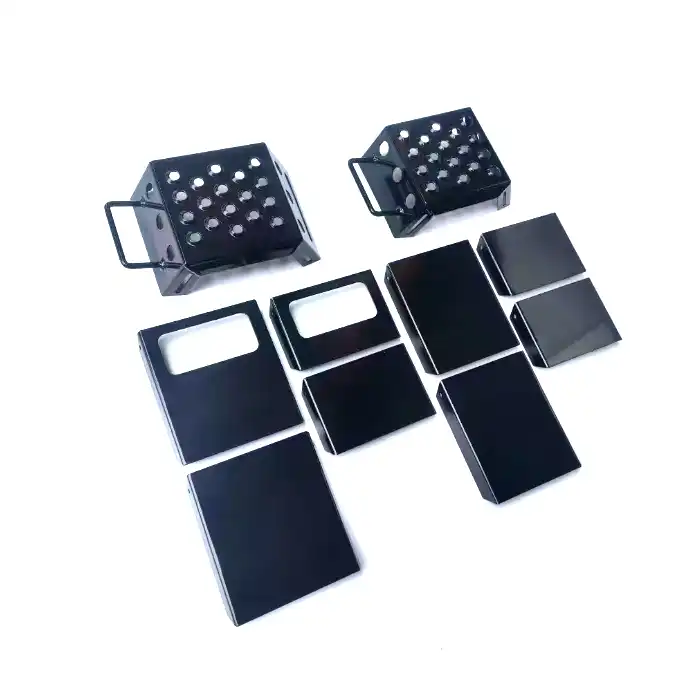How to Secure a Motorcycle on a Stand During Transport?
Securing a motorcycle on a stand during transport is crucial for ensuring the safety of your bike and other road users. The process involves using a sturdy motorcycle stand, preferably an aluminum motorcycle stand for its lightweight yet durable properties, along with proper tie-down techniques. Start by placing your motorcycle on the stand, ensuring it's stable and balanced. Use high-quality straps to secure the bike at multiple points, including the frame and handlebars. Compress the suspension slightly to prevent bouncing during transit. Double-check all attachment points and tighten as necessary. For added security, consider using wheel chocks and a transport cover. Remember, a well-secured motorcycle not only protects your investment but also provides peace of mind during transportation.

Essential Equipment for Securing Your Motorcycle
Choosing the Right Motorcycle Stand
When it comes to securing your motorcycle for transport, the foundation of your setup is a reliable motorcycle stand. An aluminum motorcycle stand is often the preferred choice due to its optimal balance of strength and lightness. These stands are designed to provide stable support while being easy to maneuver and transport. Look for stands with adjustable features to accommodate various motorcycle sizes and styles. Some key factors to consider include:
- Weight capacity: Ensure the stand can support your motorcycle's weight
- Stability: Wide base and non-slip feet for enhanced security
- Durability: High-quality materials that can withstand regular use and exposure to elements
- Portability: Foldable or compact designs for easy storage and transport
Quality Tie-Down Straps and Their Importance
Investing in high-quality tie-down straps and an aluminium motorcycle stand is crucial for safely securing your motorcycle. Opt for straps made from durable materials like polyester or nylon, with a breaking strength well above your motorcycle's weight. Features to look for include:
- Soft hooks or loops to prevent scratching your bike's finish
- Ratchet mechanisms for easy tightening and release
- Weather-resistant properties to withstand various conditions
- Appropriate length to accommodate your specific setup
Additional Security Accessories
To further enhance the safety of your motorcycle during transport, consider these additional accessories:
- Wheel chocks: Prevent forward and backward movement
- Transport covers: Protect against debris and weather
- Handlebar harnesses: Distribute tension and prevent handlebar damage
- Soft loops: Provide attachment points without risking damage to your bike
By combining these elements with a robust motorcycle stand, you create a comprehensive security system for your bike during transit.
Step-by-Step Guide to Securing Your Motorcycle
Preparing Your Motorcycle for Transport
Before securing your motorcycle on a stand for transport, it's essential to prepare the bike properly:
- Clean the motorcycle thoroughly to identify any existing damage and ensure tie-down points are free from debris.
- Check tire pressure and adjust if necessary to prevent flat spots during long transports.
- Remove or secure any loose items such as saddlebags, windscreens, or mirrors that could detach during transit.
- Document the bike's condition with photos for insurance purposes.
- Empty the fuel tank to about half-full to reduce weight and prevent spills.
Proper Placement on the Motorcycle Stand
Correctly positioning your motorcycle on the stand is crucial for stability during transport:
- Place the motorcycle stand on a level surface in your transport vehicle or trailer.
- Slowly guide your motorcycle onto the stand, ensuring it's centered and balanced.
- If using a front wheel chock, position the front tire securely within it.
- Engage the side stand or center stand (if applicable) for additional stability.
- Double-check that the motorcycle is sitting squarely and not leaning to either side.
Securing Tie-Downs and Final Checks
With your motorcycle properly positioned, follow these steps to secure it:
- Attach tie-down straps to solid anchor points on your vehicle or trailer.
- Connect the straps to sturdy parts of your motorcycle's frame or subframe, avoiding plastic components or moving parts.
- Gradually tighten the straps, compressing the suspension slightly to prevent bouncing.
- Use a crisscross pattern with the straps for even distribution of tension.
- Secure the handlebars to prevent movement during transit.
- Perform a final walk-around, checking all attachment points and adjusting as needed.
- After a short distance, stop and re-check all tie-downs, tightening if necessary.
Best Practices and Common Mistakes to Avoid
Optimizing Strap Tension for Safety
Achieving the right balance in strap tension is crucial for safely transporting your motorcycle:
- Aim for firm but not excessive tension to avoid damaging your bike's suspension or frame.
- Ensure even distribution of tension across all straps to prevent undue stress on any single point.
- Consider using strap dampeners or protectors at contact points to prevent rubbing or chafing.
- Periodically check and adjust strap tension during long trips, as vibrations can cause loosening.
Weather Considerations and Protective Measures
Different weather conditions require specific precautions when transporting your motorcycle and using an aluminium motorcycle stand:
- In rainy conditions, use a waterproof cover and ensure your aluminum motorcycle stand has non-slip feet.
- For hot weather, avoid direct sunlight on tires and consider using reflective covers to prevent overheating.
- In cold conditions, be aware that some materials may become brittle, so handle straps and covers with care.
- For windy conditions, use additional tie-downs and consider a low-profile transport cover to reduce wind resistance.
Common Mistakes and How to Avoid Them
Be aware of these frequent errors to ensure a safe transport experience:
- Overlooking regular checks during transit, potentially leading to loosened straps or shifted positioning.
- Using inadequate or worn-out equipment, risking failure during transport.
- Attaching tie-downs to weak points on the motorcycle, such as turn signals or plastic fairings.
- Over-tightening straps, which can damage the motorcycle's suspension or frame.
- Failing to account for the motorcycle's weight distribution, resulting in an unstable setup.
- Neglecting to secure loose items or removable parts, risking loss or damage during transit.
Conclusion
Mastering the art of securing a motorcycle on a stand for transport is essential for any rider who needs to move their bike safely. By choosing the right equipment, following a step-by-step approach, and being mindful of best practices, you can ensure your motorcycle arrives at its destination in the same condition it left. Remember, the key lies in using a quality motorcycle stand, particularly an aluminum motorcycle stand for its durability and lightweight properties, combined with proper tie-down techniques. With these skills, you'll have the confidence to transport your motorcycle securely, whether it's for a cross-country move or a weekend racing event.
Contact Us
For more information about our high-quality motorcycle stands and transport solutions, please contact us at info@runva.com.cn. Our team is ready to help you find the perfect equipment to keep your motorcycle safe during transport.
References
Johnson, M. (2022). The Complete Guide to Motorcycle Transport. Rider's Digest.
Smith, A. (2021). Motorcycle Safety During Transit: A Comprehensive Study. Journal of Motorcycle Engineering.
Brown, R. (2023). Innovations in Motorcycle Stand Design. Bike Tech Today.
Wilson, E. (2022). Weather Effects on Motorcycle Transport: Best Practices. Weather and Riding Magazine.
Thompson, L. (2023). Common Mistakes in Motorcycle Securing: A Survey Analysis. Transport Safety Quarterly.
Davis, K. (2021). Materials Science in Motorcycle Transport Equipment. Advanced Materials in Automotive.

_1737625693698.webp)

